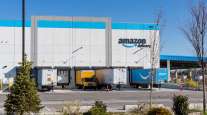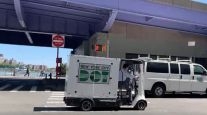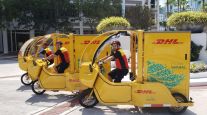Editorial: Final-Mile at the Forefront
Picture a team of Washington, D.C.-based journalists getting excited about a weeklong exploration of the long-term opportunities and challenges facing the transportation industry, and you have the scene in the Transport Topics newsroom last week during the Transportation Research Board annual meeting. Held each year right in our backyard, TRB takes a deep dive into topics that touch every aspect of transporting goods and people. This year, discussion of final-mile deliveries was front-and-center.
A key point: The costs for operating in urban areas are rising for trucking companies, propelled by growth in e-commerce and the accompanying rise in consumer demand to have goods delivered to their doorsteps. In one state, congestion-related costs for carriers operating in six urban areas jumped more than $5 billion in six years. Perhaps not all of that is due to a crush of final-mile deliveries, but making sure that all those online order deliveries don’t worsen urban congestion in years to come is an ongoing challenge. One solution is building distribution centers closer to population areas. Another idea — and one that’s easier to execute — is to simply schedule deliveries during off-hours.
These solutions deal with what’s in use now; namely, trucks. But what about other modes of transport? This year, TRB sessions were packed with discussion of automated machines that can carry deliveries right to the end-users. Some come off trucks and hit the sidewalks, others take to the roads, and all of them are designed to ease final-mile congestion.
But to really understand the problem, researchers need data. Fortunately, there should be plenty. Presentations from several panelists drilled down into the specifics of heavily traveled corridors around the country. And not just traffic; researchers study everything from vehicle length and speed to the number of road incidents, all in pursuit of gaining a better understanding of the “hows” and “whys” of traffic congestion.
One panelist, however, noted that states are not uniform in how they measure freight activity on their roads. While it is perhaps unrealistic to expect states to follow uniform metrics when it comes to tracking traffic data, this does present a challenge for researchers looking to identify patterns and follow trends on a nationwide basis. The good news? There will be information. And there will be experts to study it.
There also will be another TRB conference next year. And TT will be there to once again cover more deep dives into transportation data.




